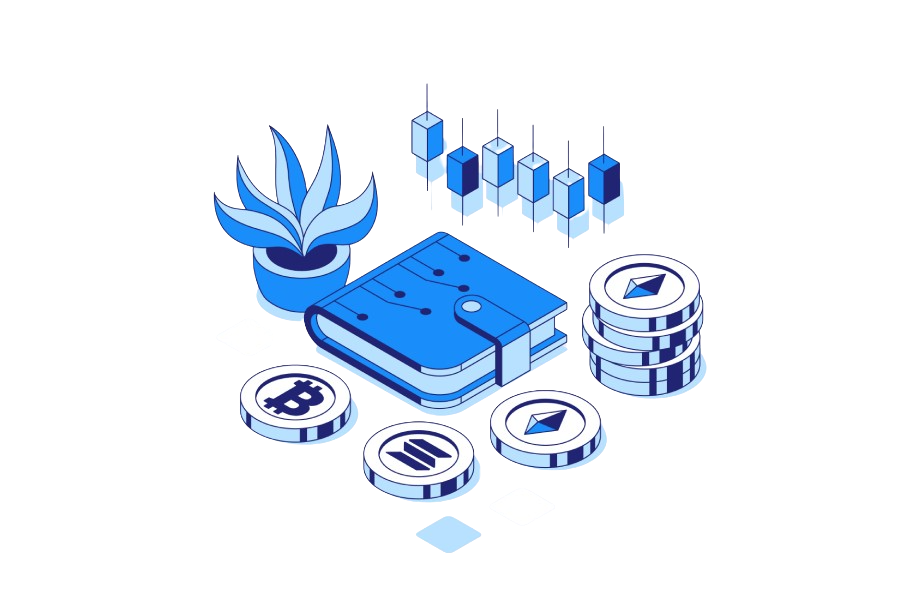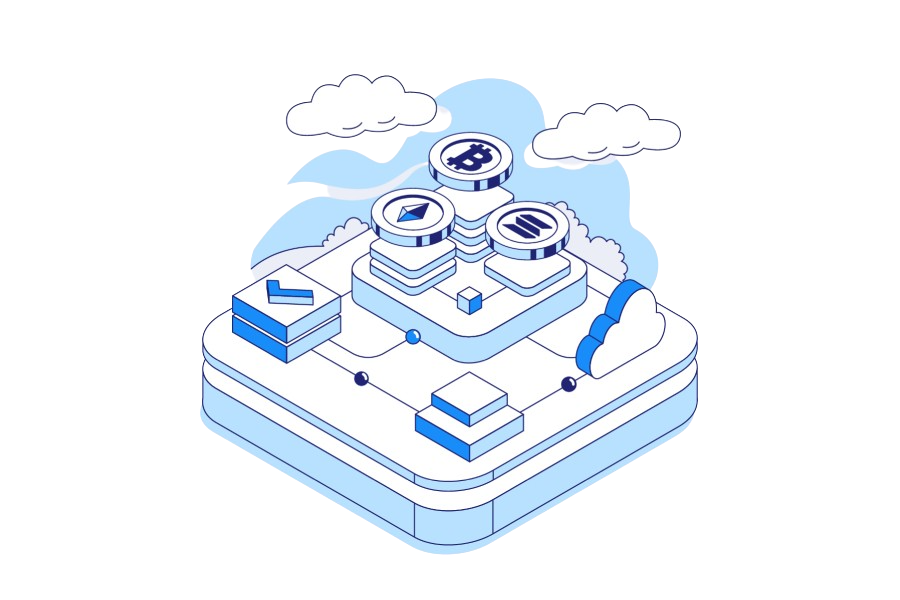What is Proof-of-Work?
Proof-of-Work (PoW) is a consensus mechanism used in cryptocurrency networks, which requires miners to solve complex mathematical puzzles to validate transactions, create new blocks, and maintain the security, stability, and decentralization of the blockchain. By expending computational resources and consuming energy, PoW discourages malicious actors and ensures the integrity of the network.
Table of Contents
Key Takeaways
- The energy consumption associated with PoW mining has raised environmental concerns due to its reliance on non-renewable energy sources and the production of electronic waste.
- Alternatives to Proof-of-Work, such as Proof-of-Stake, Delegated Proof-of-Stake, and Byzantine Fault Tolerance, address the energy consumption and scalability limitations of PoW.
- Hybrid models combining elements of PoW and other consensus mechanisms offer potential benefits like enhanced security, reduced energy consumption, and fair participation.
- Proof-of-Work is expected to remain a significant part of existing and emerging cryptocurrency networks, despite its challenges
- Innovations in mining hardware, algorithms, and energy sourcing can improve PoW's efficiency and environmental sustainability.
- Layer-2 solutions can enhance the scalability and performance of PoW-based networks
- The future of Proof-of-Work is dynamic and will be shaped by its ability to adapt to its challenges and take advantage of the growing interest in cryptocurrencies.
- PoW systems can evolve and remain competitive by addressing energy consumption concerns and embracing new technological advancements.
Introduction
Proof-of-Work (PoW) is a consensus algorithm that plays a crucial role in the world of cryptocurrencies. It serves as the backbone for decentralized networks, like Bitcoin, by validating transactions and maintaining the integrity of the blockchain.
At its core, PoW is a computational process that requires network participants, known as miners, to solve complex mathematical puzzles. This process ensures that the network remains secure and resistant to attacks. Miners compete to find the solution, and the first to succeed is rewarded with new coins and transaction fees.
The PoW system is essential for maintaining trust and decentralization in cryptocurrency networks. By requiring miners to expend resources and prove their commitment, PoW ensures that no single entity can control the network or manipulate transactions. In summary, Proof-of-Work is a vital component in maintaining the security, stability, and credibility of cryptocurrency networks.

The role of Proof-of-Work in blockchain technology
Proof-of-Work plays a significant part in maintaining data integrity and security within blockchain technology. By requiring miners to solve complex mathematical problems, PoW makes it computationally expensive to tamper with the blockchain. The effort and resources needed to alter a block increase exponentially with each subsequent block, making it practically impossible for malicious actors to modify transaction data.
As a result, PoW helps protect the blockchain from various security threats, such as double-spending or the infamous 51% attack. Double-spending occurs when someone attempts to use the same cryptocurrency unit for multiple transactions. PoW prevents this by ensuring that miners verify and confirm each transaction in a block before adding it to the blockchain.
Decentralization is another crucial aspect of blockchain technology that PoW supports.
Decentralized systems distribute power and control among multiple nodes, preventing any single entity from having too much influence over the network. In a PoW-based blockchain, miners compete on an equal footing to find the next valid block. This process promotes fair participation and creates a sense of trust among network users.
Moreover, the consensus is vital for maintaining the integrity of decentralized networks. In PoW systems, consensus is achieved when the majority of miners agree on the validity of a block. The sheer computational power required to mine a block ensures that achieving consensus is a fair and transparent process.
Proof-of-Work is an integral aspect of blockchain technology, providing security, fostering decentralization, and ensuring consensus. Its role in maintaining the robustness and credibility of cryptocurrency networks cannot be overstated.
The mining process in Proof-of-Work
The mining process in Proof-of-Work-based cryptocurrencies is a fascinating and complex procedure that involves solving cryptographic puzzles, incentivizing miners, and creating new blocks to be added to the blockchain. Let’s delve deeper into each of these aspects.
Explanation of the cryptographic puzzle
The cryptographic puzzle, also known as the mining problem, is a complex mathematical challenge that miners must solve to create a new block. This problem typically involves finding a specific hash value that meets certain predefined conditions. The hash function, such as SHA-256 used in Bitcoin, takes an input and generates a fixed-length output, which is seemingly random and unique for each distinct input.
Miners must find a specific input, called the nonce, that when combined with the block’s data, produces a hash value that is lower than a predetermined target. This target is adjusted regularly, ensuring that the difficulty of mining remains consistent with the overall mining power of the network.
Miner’s Role and Incentives
Miners play a crucial role in the PoW-based blockchain ecosystem. Their primary responsibility is to validate transactions, package them into blocks, and solve the cryptographic puzzle to add new blocks to the chain. The process of mining is computationally intensive and requires significant resources, such as specialized hardware and electricity.
To incentivize miners, the PoW system rewards them for their efforts. Upon successfully mining a block, miners receive newly minted cryptocurrency, known as the block reward, and any transaction fees associated with the transactions within the block. This reward system encourages miners to dedicate their resources and participate actively in the network, which in turn enhances its overall security and stability.
Creating new blocks and adding them to the blockchain
Once a miner has found a valid nonce that meets the required target, they have effectively “solved” the cryptographic puzzle. The miner then broadcasts the newly mined block to the rest of the network. Other nodes in the network verify the block’s validity by checking the transactions it contains and ensuring the hash value meets the target. If the block is deemed valid, it is added to the blockchain as the most recent link in the chain.
The process of creating new blocks and adding them to the blockchain is essential for maintaining the chronological order of transactions and ensuring that the entire network remains synchronized. This continuous addition of blocks creates a tamper-resistant ledger, underpinning the security and reliability of Proof-of-Work-based cryptocurrencies
Energy consumption and environmental concerns
As the popularity of Proof-of-Work-based cryptocurrencies has grown, so too has the energy demand for mining operations. The computational power required to solve the cryptographic puzzles is immense, leading to concerns about the environmental impact and sustainability of PoW systems.
The growing energy demand for mining
The competitive nature of mining means that miners are continuously seeking more powerful hardware and efficient mining techniques to increase their chances of solving the cryptographic puzzle first. As a result, the energy consumption of mining operations has skyrocketed over the years. This increasing energy demand is driven by the need to perform an ever-growing number of calculations per second, known as the hash rate.
High energy consumption has led to the growth of large-scale mining operations, often situated in regions with low electricity costs. These mining “farms” can house thousands of specialized mining devices, consuming vast amounts of electricity.
Criticisms and environmental impact
The considerable energy consumption associated with PoW mining has drawn criticism from various quarters, with concerns being raised about its impact on the environment. The electricity required for mining often comes from non-renewable sources, such as coal and natural gas, which contribute to greenhouse gas emissions and climate change.
Furthermore, the environmental impact of mining goes beyond carbon emissions. The production of specialized mining hardware and electronic waste generated as equipment becomes outdated adds to the ecological footprint of PoW mining.
Measures to reduce energy consumption
To address these concerns, various measures have been proposed and implemented to reduce the energy consumption of PoW mining. Some solutions include:
- Adopting renewable energy sources: Miners can use solar, wind, or hydroelectric power to meet their electricity needs, reducing the reliance on non-renewable sources and lowering their carbon footprint.
- Improving mining hardware efficiency: Advances in mining hardware technology can lead to more energy-efficient devices, reducing the overall energy consumption per hash.
- Switching to alternative consensus mechanisms: Some cryptocurrencies are transitioning from PoW to other consensus mechanisms, such as Proof-of-Stake, which consume considerably less energy.
While the energy consumption and environmental impact of Proof-of-Work mining remain significant concerns, ongoing efforts to reduce energy consumption and adopt more sustainable practices can help mitigate these issues.
Alternatives to Proof-of-Work
While Proof-of-Work has played a pivotal role in the growth of cryptocurrencies, its limitations have led to the development of alternative consensus mechanisms. These alternatives aim to address the energy consumption and scalability concerns associated with PoW.
Proof-of-Stake and its advantages
Proof-of-Stake (PoS) is one of the most prominent alternatives to PoW. In a PoS system, validators are chosen to create new blocks and confirm transactions based on the amount of cryptocurrency they hold and are willing to “stake” as collateral. The more coins a user stakes, the higher their chances of being selected as a validator.
Some advantages of PoS over PoW include:
- Energy efficiency: PoS requires far less computational power, leading to significantly lower energy consumption.
- Increased security: The requirement to hold and stake coins discourages malicious behavior, as validators have a vested interest in maintaining the network’s stability.
- More equitable rewards: PoS rewards are distributed more evenly among participants, reducing the centralization of power and wealth that can occur in PoW systems.
Other consensus mechanisms
There are several other consensus mechanisms that offer different approaches to maintaining blockchain integrity and security. Examples include:
- Delegated Proof-of-Stake (DPoS): A variation of PoS where users vote for a limited number of delegates to validate transactions and create new blocks.
- Proof-of-Authority (PoA): A permissioned consensus mechanism that relies on a set of trusted validators, often used in private or consortium blockchains.
- Byzantine Fault Tolerance (BFT): A family of consensus mechanisms designed to tolerate a certain number of malicious nodes while maintaining overall network integrity.
Hybrid models and their potential benefits
Some blockchain projects have adopted hybrid models, combining elements of PoW, PoS, and other consensus mechanisms. These hybrids aim to harness the strengths of each approach while mitigating their weaknesses.
For instance, Decred employs a hybrid PoW/PoS system, where PoW miners create new blocks while PoS validators vote on their validity. This combination enhances security, promotes fair participation, and reduces energy consumption.
The development of alternative consensus mechanisms and hybrid models offers promising solutions to address the limitations of Proof-of-Work, paving the way for more sustainable, secure, and scalable blockchain networks.
The future of Proof-of-Work
As the cryptocurrency landscape continues to evolve, the role of Proof-of-Work remains a topic of discussion and debate. Despite its limitations, PoW is likely to maintain a significant presence in the world of digital currencies.
Continued role in cryptocurrency networks
Proof-of-Work has proven its effectiveness in maintaining security and decentralization in prominent cryptocurrencies like Bitcoin. Its robustness and resilience to attacks have cemented its position as a reliable consensus mechanism. As a result, PoW is expected to remain an integral part of many existing and emerging cryptocurrency networks.
Potential improvements and innovations
In response to the challenges faced by PoW, ongoing research and development efforts aim to improve its efficiency and sustainability. Innovations in mining hardware, algorithms, and energy sourcing can lead to more environmentally friendly mining operations. Additionally, advancements in blockchain technology, such as layer-2 solutions, can enhance the scalability and performance of PoW-based networks.
Challenges and opportunities
The future of Proof-of-Work will likely be shaped by its ability to address its inherent challenges. As concerns over energy consumption and environmental impact persist, PoW will need to adapt and evolve to remain competitive with alternative consensus mechanisms.
At the same time, the widespread adoption and growing interest in cryptocurrencies present opportunities for PoW to demonstrate its value and resilience in a rapidly changing digital landscape.
The future of Proof-of-Work is a dynamic and exciting space, with potential improvements, innovations, and challenges that will shape the course of cryptocurrency networks for years to come.
We hope you enjoyed this Coinmama Academy article! If you have any questions, drop us a line at support@coinmama.com – we love hearing from our readers and we respond to every single email! And don’t forget to follow us on Facebook, Instagram, and Twitter.
If you’re ready to start building your own cryptocurrency portfolio, just head to our main website or pick up our free self-custody crypto wallet that lets you store your crypto safely and buy Bitcoin directly through the app!
Proof-of-Work FAQs
Proof-of-Work serves as a consensus mechanism in cryptocurrencies, ensuring the security, stability, and decentralization of the blockchain. By requiring miners to solve complex mathematical puzzles, PoW validates transactions, prevents double-spending, and protects the network from malicious actors.
In Proof-of-Work systems, miners compete to solve a cryptographic puzzle. They must find a specific input (nonce) that, when combined with the block’s data, generates a hash value lower than a predetermined target. Miners expend computational resources to find the solution, and the first to succeed is rewarded with new coins and transaction fees.
Critics argue that Proof-of-Work’s high energy consumption contributes to environmental degradation and climate change. The computational power required for mining often relies on non-renewable energy sources, which generate greenhouse gas emissions. Additionally, the production of specialized mining hardware and electronic waste exacerbates the ecological footprint of PoW mining.
Yes, there are several alternative consensus mechanisms, such as Proof-of-Stake (PoS), Delegated Proof-of-Stake (DPoS), Proof-of-Authority (PoA), and Byzantine Fault Tolerance (BFT). These alternatives aim to address the energy consumption, scalability, and other limitations associated with Proof-of-Work.
There are several approaches to improving the energy efficiency of Proof-of-Work, including:
- Adopting renewable energy sources, such as solar, wind, or hydroelectric power, for mining operations.
- Developing more energy-efficient mining hardware.
- Transitioning to alternative consensus mechanisms or hybrid models that consume less energy.
- Implementing layer-2 solutions to enhance the scalability and performance of PoW-based networks
Table of Contents
Related articles

What is Bitcoin Adoption?

What is a Bitcoin Loan?






